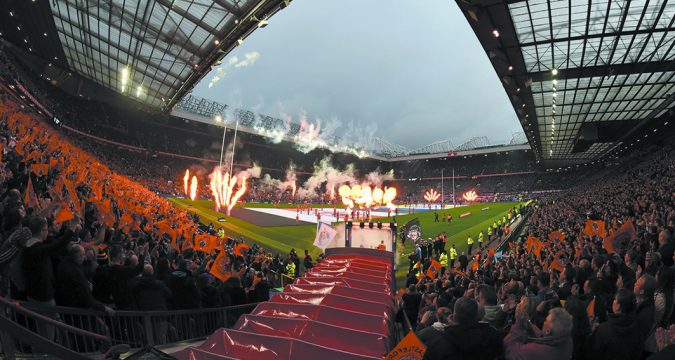
There have been no shortage of serious questions and debates for rugby league to have with itself in recent years, let alone the rollercoaster 124-year history of the sport. However, as news of financial problems at another club materialises, you wonder if the most important and unavoidable discussion to preserve the sport’s long-term future is now staring us straight in the face.
Much has been made of the organisation and composition of the domestic league structure in this country over the last 12 months. It’s resulted in yet another shuffling of the decks which, in truth, only time will determine whether or not it has been a success. However, perhaps the bigger issue is not the way the clubs line up among the three professional divisions each and every year, but the number of them operating in the game altogether.
At present, 37 professional clubs operate across Super League, Championship and League 1. Each and every one of them takes a portion of the game’s central distribution on an annual basis. But in a decade that has seen one former world champion disappear and be forced to re-form, as well as financial issues at Crusaders, Salford, and now Widnes, it is now surely reasonable to question whether there is simply enough money to be shared among so many teams.
You cannot, of course, discount the importance and relevance of mismanagement among most of those clubs who have fallen into financial trouble in recent seasons, but with what is being described as the most important TV deal in the sport’s history, rugby league is quietly sleepwalking towards a moment in 2021 that could completely transform the future of the game. It would be wise for the sport to prepare for that accordingly; which is easier said than done when Super League and the RFL appear to be now moving in polar opposite directions.
Part of that preparation has to involve a serious consideration over whether 37 teams – a number which could yet get larger if franchises such as New York or Liverpool get their way – is too much. Certain areas of the game’s heartlands have a huge saturation of teams and regular attendances which cannot be sustainable for a three-division sport moving forward. Talks of mergers in certain areas have repeatedly broken down, and while that isn’t necessarily the answer here, you do wonder if that will be raised as a possibility once again.
The situation arguably becomes even more bleak when you consider what the landscape of the game could look like post-2021. Super League clubs have already made it abundantly clear that any drop-off in television revenue is going to be felt hardest by Championship and League 1 sides – and in an already-precarious financial market for those outside of the top-flight, it’s not hard to worry about how some clubs could realistically survive with even less revenue coming through the door than there is now.
Perhaps the biggest talking point in this regard is how heavily the axe potentially swings. Does rugby league try and move back towards two divisions of fourteen teams? Do you stick with three divisions but make each division significantly smaller? It’s an incredibly delicate debate, and one which shouldn’t be decided upon overnight, but as one of the most important moments in British rugby league’s history looms on the horizon, you can’t help but worry if it’s a debate that needs to be held sooner, rather than later.
Nobody in a position of authority and seniority wants to be remembered as the person who made the tough calls to cut down on the number of teams playing in professional rugby league. But in the long run, anyone who does have the backbone and the will to make those calls could be remembered for the right reasons, rather than the wrong ones.
Rugby league has to get itself in a position to be able to command and attract the best broadcast deal possible in 2021. There are many ways in which the sport does that, but determining just what the ideal number of professional sides is represents a huge part of that debate. The more you see and hear of clubs running into financial trouble, the more you can’t help but worry if we’re already over-stretching ourselves as a game.
